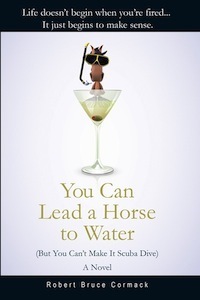Music Lessons for the Tone Deaf: The Last Waltz of the Recording Industry

We’re a remarkably tone deaf society. I don’t mean we can’t carry a tune—although most of us can’t—I’m talking about market deafness. We don’t hear an entire industry hitting one lousy note after another, wondering why we’re growing as a population but not as music consumers.
In a recent article, Jason Hirschhorn, CEO and Chief Curator of REDEF, talks about the “binding fabric of expression and emotion” that music has brought us, which, for many decades, was “a cash machine.”
Now we’re floundering—or the music industry is floundering. Streaming royalty models can’t support the artists. The distribution of iTunes has turned us into a pick-and-choose marketplace, buying individual songs instead of complete albums.
On an inflation-adjusted basis, sales have plummeted by over 70% (or $14B) since 1999—even though the American population has grown by some 46M during that period. Walmart, which moves one in every four physical discs sold in the United States, nearly halved its shelf space. Soon, Amazon may be the only mass market retailer of physical recordings.
Music executives blame iTunes, artists blame the music executives (and iTunes), and everyone blames the consumer for cannibalizing sales (downloading illegally). Yet, even with pirated tracks, sales are still down more than 50%, meaning all this blaming isn’t getting the industry anywhere.
Hirschhorn talks about “generating revenue outside of conventional unit sales,” which sounds good, but it doesn’t approach the real problem. If we’re “deaf” to the music industry today, it isn’t the format—it’s the lack of it.
We forget—or the music industry forgets—what constituted music for many years. It wasn’t a song (although songs got our attention on the charts) it was the album. It was the entire thought. Imagery floated from one song to the next, or as one reviewer back in the 60s described Procol Harum’s “Salty Dog”: “a silver thread passed through a Bach Cantata.”
It was that “silver thread” that made us buy albums, not a song. Back in 1969, when we trooped down the stairs of the local drop-in center, and heard Zeppelin’s “Good Times, Bad Times,” we had to hear the whole album, the whole experience. We were completely mesmerized by Jimmy Page’s production, the “feel” that lasted—not minutes—but well into the night.
With the Beach Boys' “Pet Sounds,” we embraced the concept album. It was our first musical movie, which would soon be followed by the Beatles’ “Sgt. Pepper’s Lonely Hearts Club Band." By the time of “Abbey Road,” we looked forward to nights, weeks and months, with eyes closed, heads back, each nuance of George Martin’s production taking us further and further.
For many of us—with very limited budgets—it was the best $20.00 we ever spent. We wore out albums, and stylus’s and speakers. Every song became a place in time, a memory, a silver thread.
Throughout the late 60s and 70s, bands like Steeley Dan, The Eagles, Traffic, Santana, The Grateful Dead, all introduced us to new styles, blends of country, jazz, conga percussion—all built upon themes so original, so completely new, listening to one song was impossible. We had 45s, but who cared? We weren’t buying songs, we were buying an event, a collusion, a seminal opera of wooly-haired rock bohemians.
Who could be satisfied with only part of Joe Cocker’s “Mad Dogs and Englishmen”? How could you buy “Gimme Shelter” off The Stones “Let It Bleed” and miss “You Can’t Always Get What You Want”?
Record executives who say “That was then, this is now” forget why 45s disappeared. It wasn’t the format. Most 45s were bought because the artist or band was usually only good for one song. Norman Greenbaum had a hit with “Spirit in the Sky,” but would end up selling hot dogs on Venice Beach.
We remained loyal to artists, the ones who gave us “Goodbye Yellow Brick Road.” When record executives figured “one good song” was enough for any album, everyone knew it was forcing consumers to “own” tracks they didn’t want. This created “a la carte music purchasing” which, by 2010, had driven sales in the United States down by 57% (to roughly 4.6B).
To say we’ve lost interest is way too simplistic. We haven’t lost interest, we’ve lost concentration. As we build our song lists on iTunes, we’ve developed a mishmash of styles. There’s no cohesiveness, no theme, no reason or rhyme. We jump from one style to another, like a music teacher exchanging charts every three minutes. We learn bits, but never complete pieces.
When we first listened to The Who’s “Tommy,” we engaged in something so complete, we became tonal. We listened for transitions, we hummed in tune. Peter Townsend made sure of it, each song blending in a similar key. It was no secret why Stevie Wonder called his greatest album: “Songs in the Key of Life.” Each of his songs blended so perfectly, we weren’t jarred, we were washed away. We were using our ears.
The “little bit of this, little bit of that” song lists buzzing out of iPods today is simply gorging. It’s the buffet of full without any real fullness. We’re a tonal mess, jumping from key to key, humming like workers on an oil rigs, most too deaf from the pounding to know one song from another.
Record executives—not the music—made us tone deaf. To say it’s time to look for “revenue outside of conventional unit sales,” is naïve. All the flow charts and graphs in the world won’t change the fundamental issue. We’ve lost the narrative, the reason music exists in our minds.
When The Band played their last concert, aptly titled: “The Last Waltz,” it was a strange foreshadowing. For all the artists performing, Joni Mitchell, Van Morrison, B.B. King, it was a last waltz. Their careers would never have that same spotlight. Perhaps The Band got out while the going was good. The Waltz would turn into a simple two-step, a clunky dime-a-dance. The melody lost its meaning and we lost ours in the process.
To get music back, the record industry has to invest—not just in money, but in time. We need those days when we clumped down the stairs to a friend’s rec room, hearing the opening to “Good Times, Bad Times.” We knew from the opening bars that life would never be the same. We would change, and the music would be fundamental that change.
It doesn’t make us sentimentalists, it makes us tonalists. Music is the “key of life,” something you don’t monetize as much as spread around. It’s the spreading itself that will bring the music industry back.
We need that more than anything else. We need the silver thread.
How do you feel about music today? Should we blame the record executives or are we to blame? Let me know at: rcormack@rogers.com
Robert Cormack is a freelance copywriter, novelist and blogger. His first novel “You Can Lead a Horse to Water (But You Can’t Make It Scuba Dive)” is available online and at most major bookstores. For more details, go to Yucca Publishing or Skyhorse Publishing.

Articles from Robert Cormack
View blog
Or just as cheap—I haven't decided yet. · “I don’t know which is more discouraging, literature or ch ...

This could (and should) change your writing entirely. · “It’s better to fail at originality than suc ...

Has the world gone crazy, or are we having daddy issues? · “The end move in politics is always to pi ...
Related professionals
You may be interested in these jobs
-
Commodity Market Risk Analyst
Found in: beBee S2 CA - 5 days ago
Atco Calgary, Canada Full timeAlways there. Anywhere. That's us We are committed to delivering inspired solutions for a better world. We care about our communities, we care about each other, and we care about showing up for those who need us. We value and encourage different perspectives and we have the coura ...
-
saw filer
Found in: Talent CA 2 C2 - 3 days ago
Thode Knife and Saw Chilliwack, CanadaEducation: Registered Apprenticeship certificate · Experience: 3 years to less than 5 years · Work site environment · Dusty · Noisy · Work setting · In shop · Urban area · Fabrication · Tasks · Instruct apprentices · Set and sharpen all types of saws · Develop manufacturing and p ...
-
cook
Found in: Talent CA 2 C2 - 4 days ago
Panago Pizza Dawson Creek, CanadaEducation: No degree, certificate or diploma · Experience: 1 year to less than 2 years · Work setting · Restaurant · Tasks · Prepare and cook complete meals or individual dishes and foods · Inspect kitchens and food service areas · Train staff in preparation, cooking and handling ...



Comments
Robert Cormack
7 years ago #2
Yeah, I started out the same way, back in the days when radio stations could get staff great discounts on albums. At my first station (CKNX, Wingham, ON), I think I bought more albums in a two month period then, well, EVER. Imagine picking up your "stack" in the Traffic Office, including Rumors, Living on the Fault Line, Little Criminals, Running on Empty, Street Survivors, Talking Heads:77. One sitting would last six or seven hours, sometimes well into the night. The next morning I'd have at least twenty songs swirling around in my head, always coming back to Stevie: "You can go your own way..."
Randy Keho
7 years ago #1